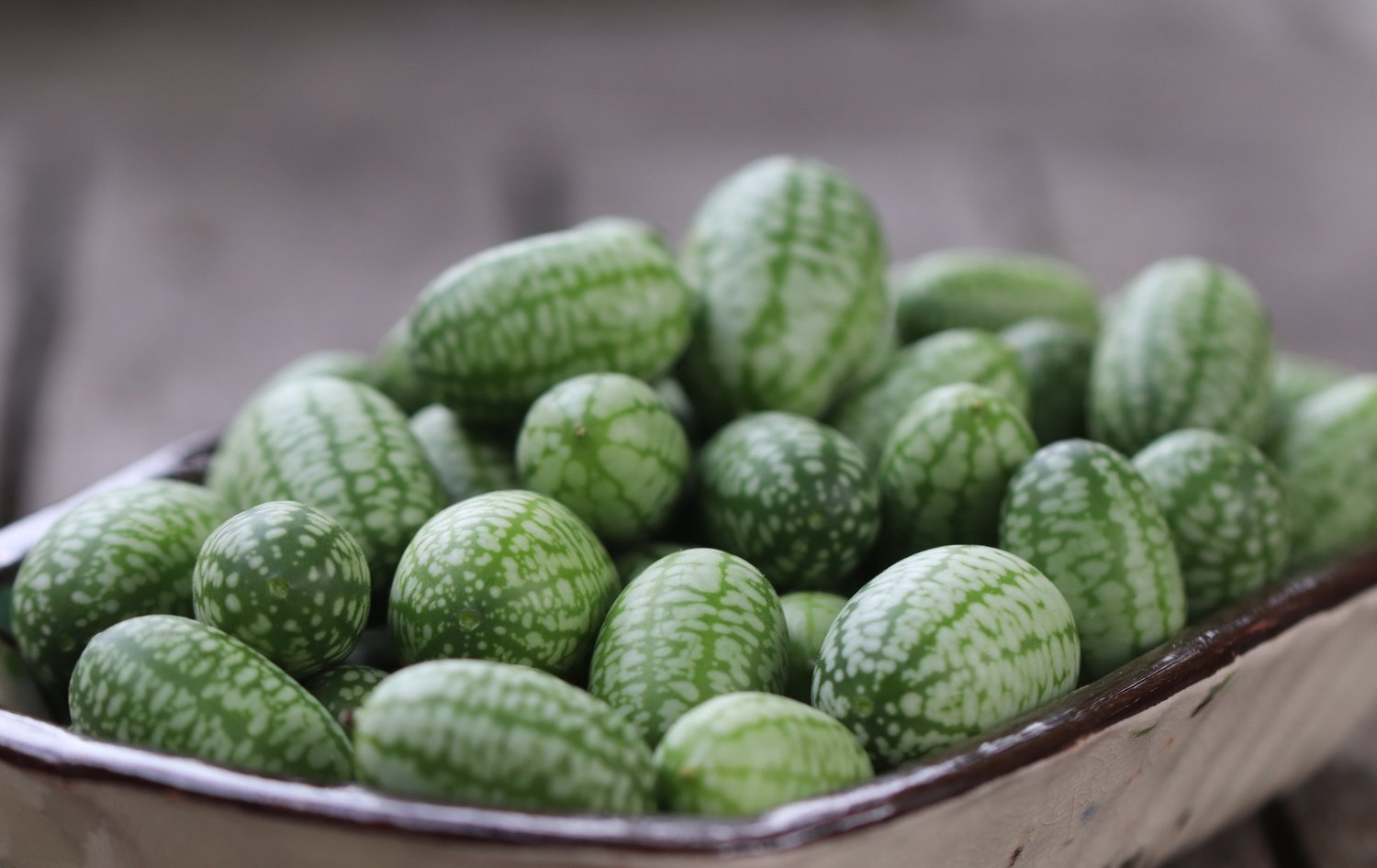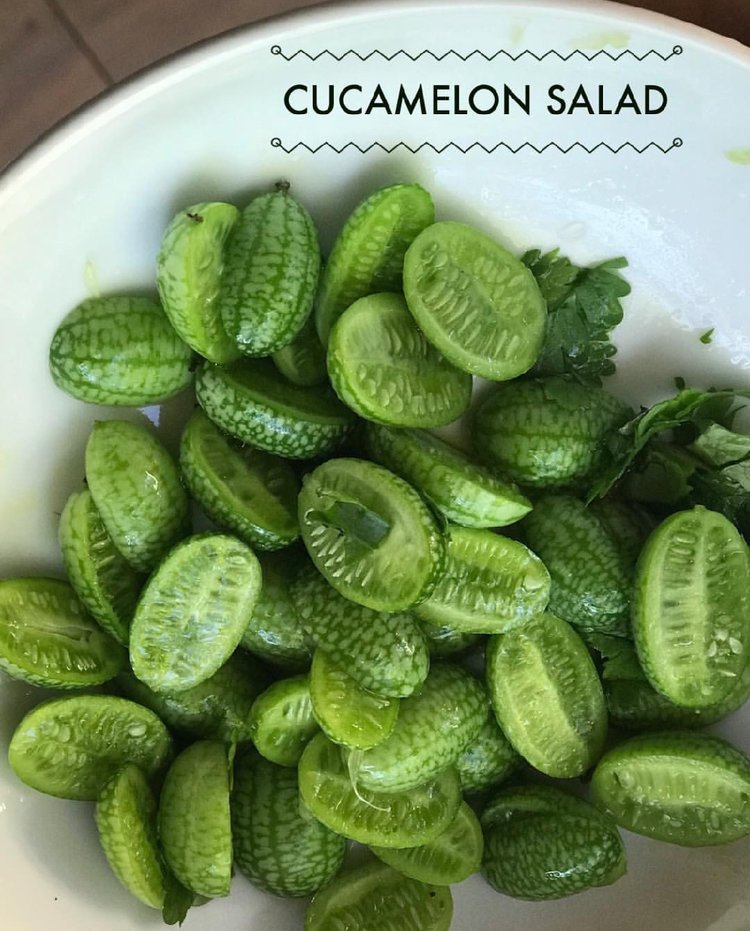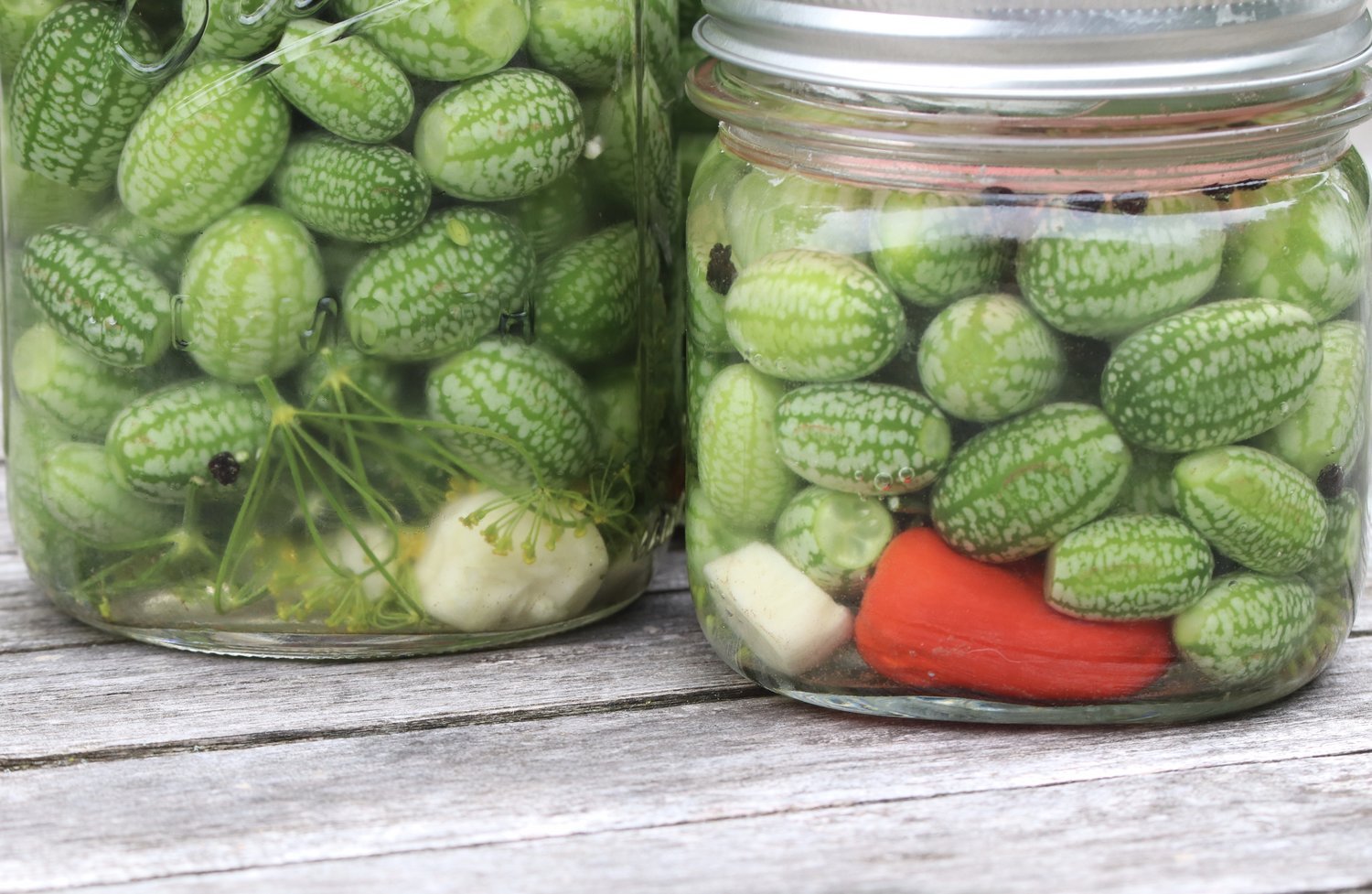Cucamelons: Debunking Garden Envy
I have some confessions to make. Last year when I was new to Instagram and its amazing community of open, communicative and helpful gardeners the world around, I quickly fell into a deep rabbit hole of what mankind has suffered from for eons only now has a nifty hashtag and acronym to accompany it.
FOMO.
The fear of missing out.
What started out as meager bowls in mid-July matured into several pounds a picking by late August.
I had to google this a few weeks ago when a friend used it, even though somewhere deep down I knew what it was. The fear of missing out. Yes, I started to feel like I didn't have the most unique, nifty veggies to photograph and that as a result my garden - and more importantly, my account itself, a virtual page of squares on a grid - was "less than".
This of course is a ridiculous construct of the virtual world I choose to spend time in, fostering friendships with fellow gardeners from around the world and sharing inspiration through virtually visiting each other’s gardens on the regular. If you don’t know what I’m talking about, head on over to my instagram account here and see what I mean. It is a vastly beautiful and inspiring visual-based social media platform.
The vast majority of my time there is deeply positive, and I quite honestly relish the opportunity to share our knowledge, hopefully inspiring new gardeners to give gardening a go and encourage anyone to stretch their season, but especially in the North. This irrational need to not miss out is born out of the obvious and palpable beauty of this social media platform clashing with the well-documented downside of being so connected all the time.
The central arbor filled in with cucamelon vines running amok over this new trellis by mid-August.
And yet, I couldn't rationalize my way out of this unmet desire. I resolved to grow beans that weren't simply green, and I would not call it a successful growing season without climbing nasturtiums up a central archway and those prized cucamelons. I took the bait hook, line, and sinker.
And now that I'm on the other side of the cucamelon craze, I am here to say one word: meh.
To be brutally honest, I don't love them. And worry not because in my opinion, you aren't missing much.
Yes, they are unequivocally photogenic and that aspect has been a true joy for me. Additionally, they are truly prolific once summer's heat kicks in. They also seem disease resistant, a welcome respite this year in what was a constant battle to understand and help our plants thrive under a myriad of beetle damage. Harvest, often, and they will continue to send more cucamelons your way than you may want. First we tried them fresh, straight off the vine, standing in the middle of the garden.
I will never forget my first bite of cucamelon.
So much was riding on this little vegetable. Seasons of waiting, followed by months of tending to seedlings, carefully setting transplants out when the soil was warm enough, my memory flooded with images of cucamelons and gushing captions about how wonderfully delicious they are, with a finish of citrus.
The pedestal on which they resided pretty much destined them to be a let down in hindsight.
They had a cucumber vibe for sure, the skins a bit tough, and sour on the back end. But I wasn't getting ANY "finishing with citrus/lime". In order to get that, I ended up having to slice them and squeeze fresh lime juice on them. Which, it turns out, is how I prefer to eat them.
Cucamelons sliced in half, sprinkled with chopped cilantro, tossed with a little olive oil, sprinkled with sea salt, and finally splashed with the juice of a lime. This is my ideal cucamelon salad. Simple, fast, satisfying every time.
Here's what I like to do. Slice them in half and drizzle with olive oil and sea salt. Squeeze half a lime over them, or more, to taste. Top with chopped cilantro. I use this as a topping for beans and rice, which is a staple meal in our home. So, they aren't a total garden fail, but it takes a bit of magic for my palette to jump at them in a dish.
Another way we’ve made them super tasty is by pickling them. I did a pretty quick lacto-fermentation on several pounds of cucamelons with garlic, dill, peppercorns, and chili. They taste just like a dill pickle, only in this cute little package. Cucamelons redeemed!
My point in blabbering on and on about these little garden darlings is that if you happen to be suffering from any form of garden FOMO around this vegetable, they just aren't worthy of it. Don't sweat it a minute longer.
Pickled whole after nicking off the blossom end, these made my unimpressed palette jump for joy.
If nothing else, they are a fun, novel food that delights and intrigues garden visitors. But recall I felt left out, and so I grew them. Now I’ve grown them and I’m thinking they aren’t that big of a deal.
Will we be growing them again? I think so. Four plants again? I think not! I'll probably grow two plants next year, and grow them from our tubers we will be lifting and saving.
I’ve been sitting with this for a while now and taken this cucamelon lesson to heart diving deep into my knee-jerk reactions of feeling “less than” with my garden adventures this summer. I am also able to see now what holds water with our palettes, what works well in my garden layout, and what will make the cut for next year, because we tried a lot of new things this summer, and a lot of it won’t be making an encore presentation. I’m especially focused on foods my boys will eat, because while photogenic food is fun, we are growing it to be eaten and there are some foods they just protest, cucamelons being top on the list.
If you’re a newbie or space is at a premium, I really encourage you to be as practical as possible with your growing space. Think long and hard about what you reach for at the farmers market or grocery store, what you enjoy cooking most, and find ways to grow those specific foods. Within those vegetables, explore to your heart's (and catalog's) content until you find your favorite varieties and ones that can extend your harvest season as long as possible.
For us, the culmination of our garden toiling is what graces our dinner plate; ideally, our entire family enjoys the produce we serve. Truth be told, I am moving more toward catering our garden space to foods our children will happily consume (less broccoli is their daily plea!). They are not loving any aspect of the cucamelon experience, so it’s my husband and I doing all the consuming.
And, at the end of the day, it turns out I can live a happy and fulfilled life without cucamelons, as cute and fun as they are - and a whole list of other flashy bean varieties, which I’ll dish on later this fall after I’ve done my fall cleanup and had more time to reflect.




